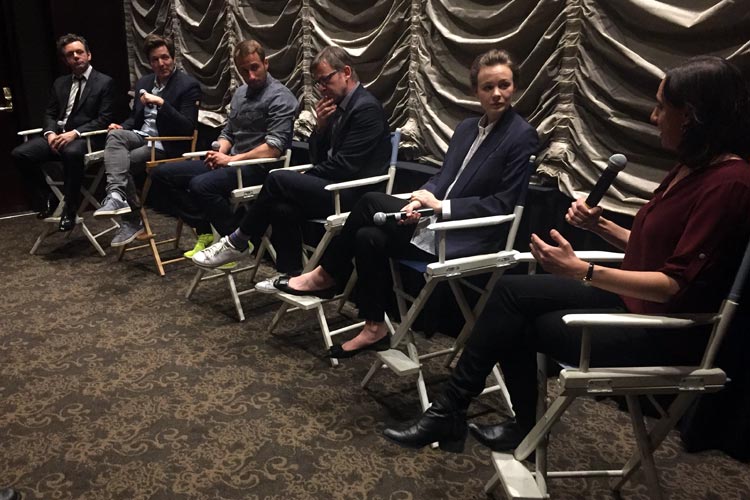The following questions and answers are excerpted from a conversation that followed the NBR screening of Far From the Madding Crowd.
What made the story right for a modern day interpretation?
Nicholls: I think if you pitch the story – an independent woman has to choose between three different contrasting men while maintaining her independence – I think that would feel very modern and contemporary. And that’s the story from 1872. It feels completely fresh and modern to me. When I reread the book, that’s what I got from it. There’s even a moment in the film, and in the novel too, when she says, “it is hard for a woman to express her emotions in a language created by men to express theirs.” Wow! That’s a kind of feminist literary theory idea, and here it is in a novel from the 1870’s. Moments like that occurred throughout the reading, and they were enough to convince me that it was a highly relevant, contemporary story.
Mr. Schoenaerts, your character seems to have a deep connection to the land. How do you perceive him?
Schoenaerts: I think a very specific environment affects your entire rhythm, your entire being. Often people relate to him as a muted character. But I think he doesn’t speak a lot not because he doesn’t have anything to say, but because he doesn’t have anyone to listen to him. At the same time, he uses words in a very measured way. It’s only to say what he really needs to say, and what he really feels. So he’s not easily affected by the noise of men because he’s so in tune with the elements – earth, wind and fire. Those things are his language, they provide his rhythm. So the noise people make, and whatever they say, doesn’t really affect him.
That’s her great challenge, to find a way to restore the place and make it better
Mr. Sheen, past loves of your character are alluded to in the film, but we never really learn what happened. Can you discuss how you thought of the backstory of your character?
Sheen: When Thomas and I first discussed him, I had this idea – an image that came to me – about his character: Something like an old Victorian monolithic engine that’s laid dormant for years, covered in dust and rust and cobwebs, and then slowly the cogs just begin turning again… and this thing starts up. And once it starts up, it can’t stop. It was just an intellectual idea, but I thought of him as a man who had lost his sense of self very early on, and because of his wealth had been able to retreat into a world of isolation. And then this invitation back into the world comes in the form of a valentine. And he seizes it, because he needs something to hold onto very badly.
Your character seems to have a great internal strength even before she finds herself owning an estate. Can you talk about how you explored that?
Mulligan: This opportunity arises when she inherits the estate, and that’s perfect for her, that’s exciting for her—it gives her a real purpose, and she’s been looking to have one, since she’s so driven. That’s her great challenge, to find a way to restore the place and make it better. So while she definitely gains a great deal of authority, she also remains connected to the land and herself in an interesting way, even as she’s being pursued by these three very different men.
Can you discuss how you went about adapting the book for the screen?
Vinterberg: Deciding what to bring the screen from the book was the main challenge, and will always be the challenge with an adaptation, and that’s something we’ve been carrying all the way through the process of making this film. There’s a lot of material. And it’s so rich, and the book is so dear… and we went out and shot a lot of material. In the editing we had to make a lot of painful decisions, and I guess that’s the nature of it: the story has to land, he has to get his valentines card—that’s the nature of it. But I also wanted to give the scenes and the actors a chance to breath. I wanted the moments to breath. So finding that balance of being loyal to the book, while also providing for those quieter moments, all within two hours, was a real challenge. But our amazing editor Claire Simpson was able to find that balance… it took a lot of work, and a lot of time.

